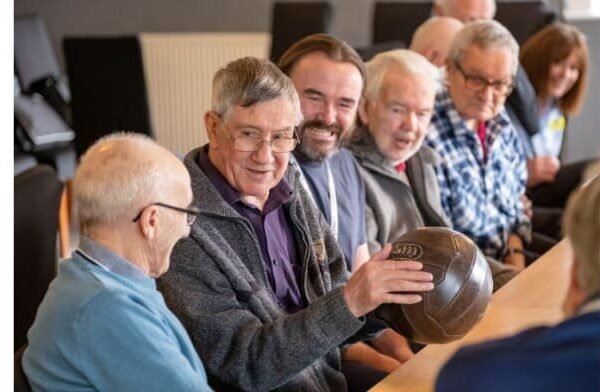NEW research has suggested that many more of Scotland’s older population are taking up sport as they near or enter retirement than was previously believed.
With the advent of walking sports, netball and rugby latching on to the success of ‘Walking Football’ to inspire engagement among the older population, and growth of Park Runs and JogScotland events, there has been a growing belief that Scotland’s trend of ongoing decline in sport from the teenage years may finally be uncovering a very welcome spike. A new study conducted in 2019 would appear to back this up, at least in some sports and parts of Scotland.
Research conducted by Rachel Kidd, a recent BSc (Hons) Graduate from the University of West of Scotland in Sport and Exercise Science, and new OSS Research Assistant, has unearthed evidence of a change in the trend of sport activity among older people. The last decade of Scottish Household and Scottish Health surveys, the largest surveys in Scotland conducted for the Scottish Government, have consistently pointed to a fall in sport participation through the life of people in Scotland with no upturn. Is that changing and will the trend remain after COVID-19? This is Rachel’s first report for OSS.
Sport Participation in Older People
By Rachel Kidd
There is a huge gap in the research that looks into sport participation of older adults from a longitudinal point of view, as the majority of research is cross-sectional and focuses on one group of people at a specific time. Therefore, this study was conducted using recall bias to gain a longitudinal view on older adult’s lifetime participation levels. An online survey was received by adults over the age of 50 who are actively involved in sport through social media and Jog Scotland correspondence.
From the survey data, a clear trend could be seen as sport participation levels declined from school age to the 30-40 marker and steadily increased until the age of 70. The majority of participants spent more time doing sport between the ages of 50 and 70 compared to any other point in their lifetime. Similarly, 87% of individuals in this study have been actively involved in sport. The average sport participation rate in Scotland is 34% for those over the age of 60 (Scottish Health Survey, 2018).
Previous research has shown that participation in events such as Park Runs or JogScotland events is higher than average and has increased over time (Davison and Cowan, 2020). The reasons for older adults participating in this type of sport are fitness or health reasons. However, the key barrier to sport participation was reported to be time, due to work, family or other commitments. Introducing more sports clubs that cater to all the family might encourage more older adults to participate in sports to spend time with children and grandchildren, breaking down barriers to sport.
Socioeconomic status was found to play a significant part in whether or not an individual participates in sport. Over half of the participants in this survey were in the second highest socioeconomic group and participated in sport more times per week than those in poorer groups. This gap is most likely due to those with higher incomes and educational attainments having more money to spend on sport and more opportunities. There are very limited sports clubs primarily for adults over the age of 50 and, for those that are available, payments are required, making sport participation more difficult for those with less money.
Consistent with previous research, females were less likely to participate in sport than males in this study which most likely stems from gender differences in physical education in school. Girls and boys require different environments, activities and have different motivations and attitudes towards sport. This most likely transfers into lifetime sport participation levels in women.
In conclusion, this study suggests that people across Scotland are taking up sport in older age, but, currently, the growth is mainly witnessed in individual sports such as jogging or running.
Read full research report here.






Thought Piece from Charlie Raeburn for Reform Scotland